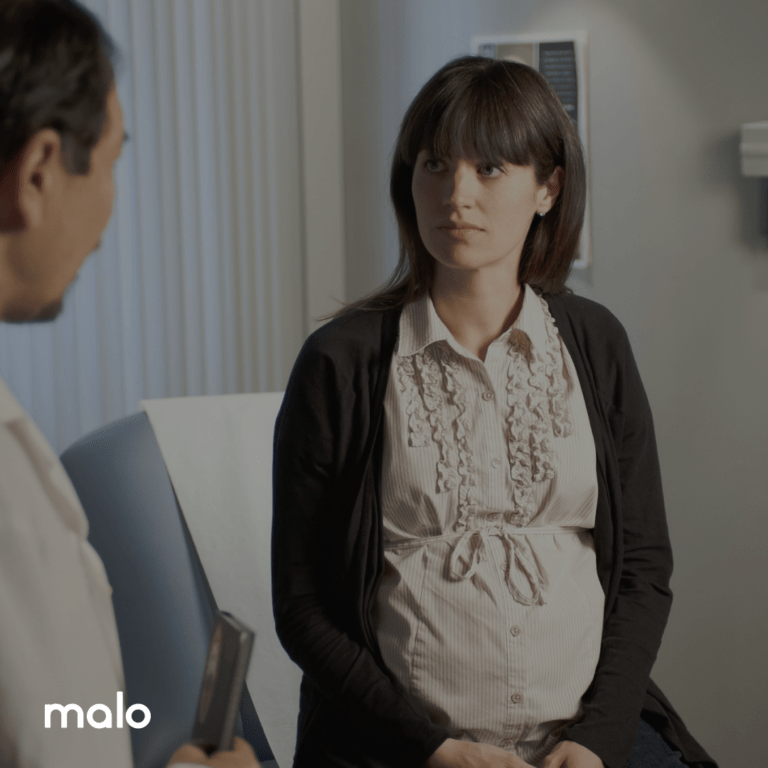Suddenly, moving from the bed to the chair transforms into a small mission. Bending down to tie a shoelace feels like summiting a mountain. Does every stretch or twinge in your muscle have you calculating whether it’s “normal”? If so, you’re far from alone. Many parents experience pregnancy aches—those sometimes subtle, sometimes emphatically announced discomforts—that dot the landscape of the journey to parenthood. Hormones surge, ligaments loosen, your centre of gravity shifts; it’s as though your body is rewriting its manual overnight. But what truly causes these sensations? How can you discern everyday discomfort from a red flag? And most importantly, what practical steps can support your body through the changes, instead of simply enduring? Read on for a medical, scientific, and compassionate perspective that turns confusion into clarity, and worry into confidence.
Understanding pregnancy aches: hormones, biomechanics, and everyday reality
Pregnancy aches do not discriminate. Whether your bump is barely visible or already prominent, the soft tissues of your body carry the story of this transformation. Why does this happen? When hormones like relaxin and progesterone are released, they gently soften connective tissue—making joints and ligaments more supple. Why the softening? This adaptation helps your pelvis make room for birth, though it usually means muscles work harder to compensate. Muscle fatigue often creeps in, leaving that heavy, stretched feeling at day’s end.
Physical changes are relentless. The center of gravity tips forward, subtly altering balance and increasing lumbar (lower back) tension. The pelvis also adjusts, with the pubic symphysis and sacroiliac joints playing starring roles in unexpected aches. Meanwhile, even something as innocent as a mineral deficiency—like being low in magnesium or calcium—can make leg cramps at night much more likely.
Not every ache is cause for alarm, but vigilance matters. Severe pain, new neurological sensations, fever, or abnormal swelling demand professional evaluation. Everyday discomforts, though, often bow to supportive habits, small, consistent changes in daily routine, and a bit of scientific know-how.
The varieties of pregnancy aches: from head to toe
Back pain and muscular adaptation
Back pain reigns as the most notorious of all pregnancy aches. Both upper and lower back can be affected, with the lumbar region burdened by posture changes, increased abdominal load, and ligamentous laxity under hormonal influence. Ever find standing for long stretches intolerable? Strained back muscles, especially with weakened abdominal support, are often to blame. Regular stretching and ergonomic tweaks—a supportive chair, careful lifting—offer real relief.
Pelvic and round ligament pain
Sharp twinges in the groin or across the lower abdomen? These could signal round ligament pain—a classic sign as the uterus expands. The pelvic girdle also becomes more mobile, sometimes resulting in unstable, uncomfortable movement. Support belts can stabilize, while careful movement—standing up slowly, repositioning with care—reduces the risk of triggering pain.
Leg cramps, restless legs, and the burden of circulation
The legs, especially at night, are frequent sites of pregnancy aches. Why do cramps invade sleep? The answer lies in circulatory changes, extra pressure within pelvic veins, and subtle electrolyte shifts. Restless leg syndrome can disrupt rest, amplifying fatigue and irritability. Hydration, magnesium-rich foods (think nuts, seeds, leafy greens), and a gentle evening stretching regimen form a three-pronged support system.
Abdominal, rib, and digestive discomforts
Abdominal aches—often fleeting but sometimes persistent—are typically explained by muscle stretching, uterine growth, or even shifts in gut motility. As pregnancy advances, the uterus nudges upwards against the rib cage, stretching the intercostal muscles and triggering side discomfort. Most of these sensations are benign, but severe or specific patterns (especially with bleeding or fever) must be quickly evaluated.
Hand, wrist, and nerve syndromes
Pregnancy brings with it a curious rise in carpal tunnel syndrome. Fluid retention compresses the median nerve at the wrist, prompting numbness, tingling, or weakness. Added to this, loosened joints heighten general joint vulnerability. Wrist splints, breaks from repetitive motion, and elevation can ease these symptoms.
Headaches, migraines, and sensory shifts
Many encounter headaches or even migraines as hormonal tides shift. While dehydration, stress, or disrupted sleep frequently play a role, persistent or severe headaches, especially those paired with visual changes or high blood pressure, need prompt investigation.
The swelling spectrum: edema and hemorrhoids
The body’s fluid management changes drastically in pregnancy. Edema—puffy ankles, swollen fingers—escorts discomfort into the daily routine. Elevated legs, movement breaks, and avoiding restrictive clothing all alleviate this swelling. In the digestive arena, increased pelvic pressure and slower transit invite hemorrhoidal pain, which responds well to hydration, dietary fiber, and warm sitz baths.
Nighttime discomfort and sleep disruption
Muscle aches, leg cramps, and even baby’s kicks can leave restful sleep feeling like a distant dream. Experimenting with supportive pillows, pre-bed stretching, and regular routines sets the stage for better rest—though patience is sometimes the best companion.
What leads to pregnancy aches? Medical factors and risk amplifiers
Hormonal surges are the orchestrators—but not the only players—in the story of pregnancy aches. Weight gain intensifies load on postural muscles; shifting biomechanics make the lower back, hips, and legs more vulnerable to micro-injury. Fluid retention stretches tissues and sometimes compresses nerves, as in sciatica or carpal tunnel. Nutritional status, especially magnesium and calcium levels, set thresholds for muscular irritability. Not to be forgotten: fatigue and poor sleep, both notorious for heightening pain perception. Importantly, while muscle aches are commonplace, persistent, localized, or severe pain always warrants timely advice, given possible links to more serious conditions such as deep vein thrombosis or pre-eclampsia.
Pregancy aches across the trimesters: changing patterns, new sensations
The faces of pregnancy aches evolve rapidly:
- First trimester: Fatigue dominates, accompanied by mild abdominal or back cramps and the sudden prominence of breast sensitivity. Headaches may also make unexpected appearances.
- Second trimester: Round ligament pain and lower back discomfort set in. Cramps and sleep disruption often intensify as the uterus stretches and posture adapts.
- Third trimester: Musculoskeletal complaints peak: back, hip, leg, rib pain, swelling, and fragmented sleep are frequent companions as the body prepares for labor.
- Postpartum period: Most aches fade as hormones rebalance and the uterus recedes. Persistent pain, however, is never to be dismissed—it deserves careful assessment to exclude underlying issues.
Recognizing, distinguishing, and managing muscle aches
So how do you know if a pregnancy ache is “normal”? Context, duration, and associated symptoms are key. Muscle aches most commonly involve dull stiffness or fatigue in the lower back, legs, or hips—worse after a long day, better with gentle activity and rest. Red flags are sharp, persistent, or one-sided pain, sudden swelling, high fever, neurological symptoms, or the onset of contractions. Medical evaluation is essential in these scenarios—they may indicate conditions requiring urgent attention.
Practical strategies for relief and prevention
Pregnancy aches rarely respond to a single solution. A blend of approaches, rooted in scientific evidence and tenderness to individual differences, is most effective:
- Gentle stretching in the morning and evening keeps muscles and ligaments supple.
- Prenatal yoga and tailored exercise classes boost flexibility, coordination, and self-awareness.
- Swimming and regular walks support muscle tone and circulation, minimizing impact on weight-bearing joints.
- Heat and cold variations (think warm baths, heating pads, or cold compresses) soothe acute discomfort, but always avoid directing excessive heat at the abdomen.
- Professional prenatal massage reduces muscular imbalances and tension.
- Prioritizing ergonomics—a firm chair, supportive pillows, optimal sleep posture—empowers muscles to work more efficiently.
- Well-fitted, supportive footwear prevents strain from traveling up the legs and back.
- Regular rest, interspersed with routine movement, supports recovery and resilience.
Nutrition counts, too. A diet well-stocked in magnesium, calcium, and protein (dairy, leafy greens, nuts, seeds, whole grains) bolsters neuromuscular health. Consistent hydration—at least 1.5 liters per day—reduces cramps, aids circulation, and flushes metabolic byproducts.
Medication, when needed, should be approached with care. Acetaminophen remains the first option for most, in the lowest effective dose and always after medical guidance; avoid NSAIDs or opioids unless prescribed.
When should parents seek medical advice?
Certain symptoms stop being “normal discomfort” and become warning signs:
- Sudden, severe, or prolonged pain
- Pain with vaginal bleeding, odd discharge, or regular contractions
- Severe headaches, visual symptoms, elevated blood pressure
- Facial, hand, or rapid-onset swelling
- Fever, chills, or infection-like features
- Redness, warmth, or swelling in a single limb
- Muscle weakness or loss of function
Rapid contact with a healthcare professional is not only protective—it’s empowering.
The ripple effects: emotional and psychological dimensions of pregnancy aches
Constant physical discomfort exerts a quiet toll on emotional well-being. Irritability, anxiety, and even sadness can weave into days marked by persistent discomfort or sleepless nights. Helpful counterpoints? Staying active—gently, within limits. Exploring mind-body techniques like deep breathing or guided relaxation. Prioritizing sleep hygiene, enlisting supportive loved ones, and, when needed, connecting with mental health professionals or parent groups. Recognizing that pregnancy aches touch more than just muscles is the first step in reclaiming confidence and tranquility.
Key takeaways
- Pregnancy aches are an almost universal hallmark of this life phase, fueled by hormonal surges, weight shifts, and tissue adaptations.
- Most discomforts are benign, responsive to simple strategies—gentle exercise, stretching, supportive ergonomics, balanced nutrients, and hydration.
- Persistent, severe, or unusual pain, especially when paired with swelling, fever, or neurological signs, signals the need for swift medical evaluation.
- Emotional impacts matter—support, validation, and mental health care are just as vital to parents’ well-being.
- Excellent personalized advice and free health questionnaires for children are available on the Heloa application—a valuable companion for parents navigating these changes.
Above all, treating your body with care, curiosity, and patience is a wise investment in your experience of pregnancy, as you prepare to welcome your little one.
Questions Parents Ask
Can flu-like body aches happen during pregnancy even without a fever?
Absolutely, it’s possible to notice flu-like aches in the body during pregnancy, sometimes even if you don’t have a fever or other symptoms of illness. These widespread discomforts can be explained by hormonal changes, extra fluid, and your body’s natural process of adapting to pregnancy. If the aches remain mild and you don’t have signs of infection (like fever or chills), il n’y a généralement pas de raison de s’inquiéter. Still, listen to your body: if other symptoms appear or if discomfort becomes intense, a discussion with your healthcare provider is always the safe option.
Why do aches in early pregnancy feel similar to menstrual cramps?
In early pregnancy, some people experience cramps and lower abdominal aches that feel much like period cramps. This is mostly due to normal changes—the uterus is expanding and ligaments are stretching to prepare for your growing baby. These sensations are generally mild and can come and go. If the pain gets sudden, severe, or is joined by bleeding, it is important to reach out to a healthcare professional, but most of the time, these mild aches are all part of your body’s remarkable work.
Can pregnancy aches affect the whole body, not just the belly or back?
Yes, pregnancy does not limit discomfort to the abdomen or lower back. Many future parents notice widespread aches—sometimes arms, legs, and even hands feel sore or fatigued. Hormones, shifting posture, and retained fluid can all play a role in these sensations. While these aches are usually a sign that your body is adapting to its new needs, persistent or very strong pains deserve extra attention and a gentle check-in with a professional.

Further reading:









